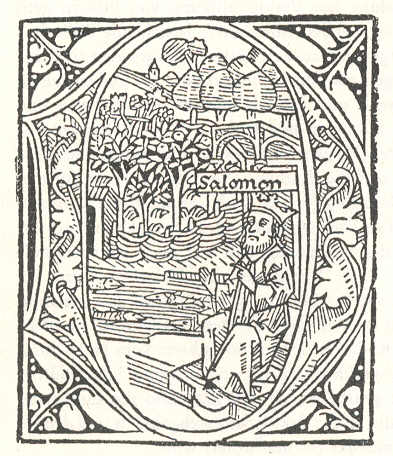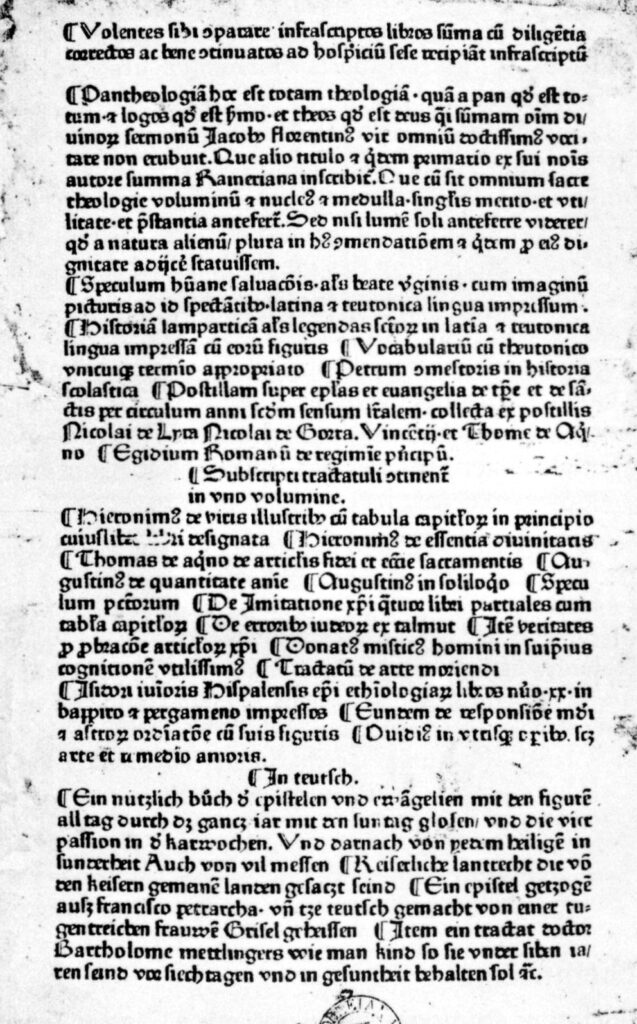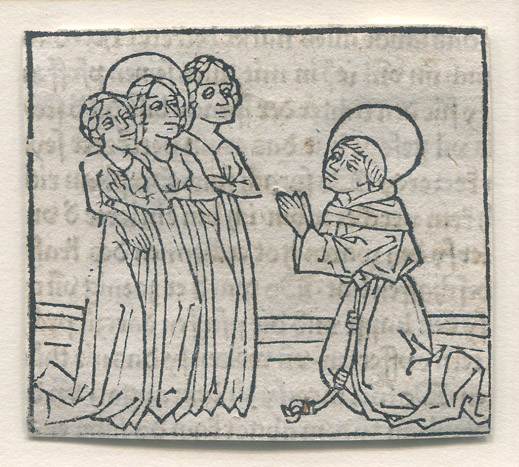the first printer in Augsburg, where he worked from 1468 until his death; he produced about 80 books including two German editions of the Bible and the first printed calendar. He came to Augsburg from Strassburg and printed in 1472–76 three large works of moral instruction. He also printed the first large illustrated book, Jacobus de Voragine’s Legenda aurea in 2 volumes with 131 woodcuts, 1471–76. Johann Zainer, the first printer in Ulm, was probably his brother.
In 1468 Meditationes vitae domini was the first book he is known to have printed. The German edition of the Legenda Aurea of Jacobus de Voragine, was the first illustrated book he printed. In 1471/72 Zainer made the first printed edition of the extremely popular Der Heiligen Leben.[2] In 1472 appeared the Etymologiae of Isidore of Seville About 1475 he printed a German edition of the Bible, with a second edition in 1477.
Günther Zainer’s printing was of high quality, as to paper, presswork and typefaces: 32 illustrated books and broadsides with altogether 100 illustrations testify to his interest in decoration. His first German Bible is decorated with 73 ornamental initials.

Initial from the German Bible, printed by Zainer in Augsburg in 1477

Printed list of works printed by Zainer, ca. 1480

Earliest printed example of a classical T and O map (by Günther Zainer, Augsburg, 1472), illustrating the first page of chapter XIV of the Etymologiae of Isidore of Seville (it shows the continents as domains of the sons of Noah: Sem (Shem), Iafeth (Japheth) and Cham (Ham)).

Early woodcut print of a saint kneeling before three women by Zainer, circa 1473.